11 Nucleus
The nucleus is the largest and most prominent of a cell’s organelles (Figure 3.5). The nucleus is generally considered the control centre of the cell because it stores all of the genetic instructions for manufacturing proteins. Interestingly, some cells in the body, such as muscle cells, contain more than one nucleus (Figure 3.6), which is known as multinucleated. Other cells, such as mammalian red blood cells (RBCs), do not contain nuclei at all. RBCs eject their nuclei as they mature, making space for the large numbers of haemoglobin molecules that carry oxygen throughout the body. Without nuclei, the life span of RBCs is short, and so the body must produce new ones constantly.
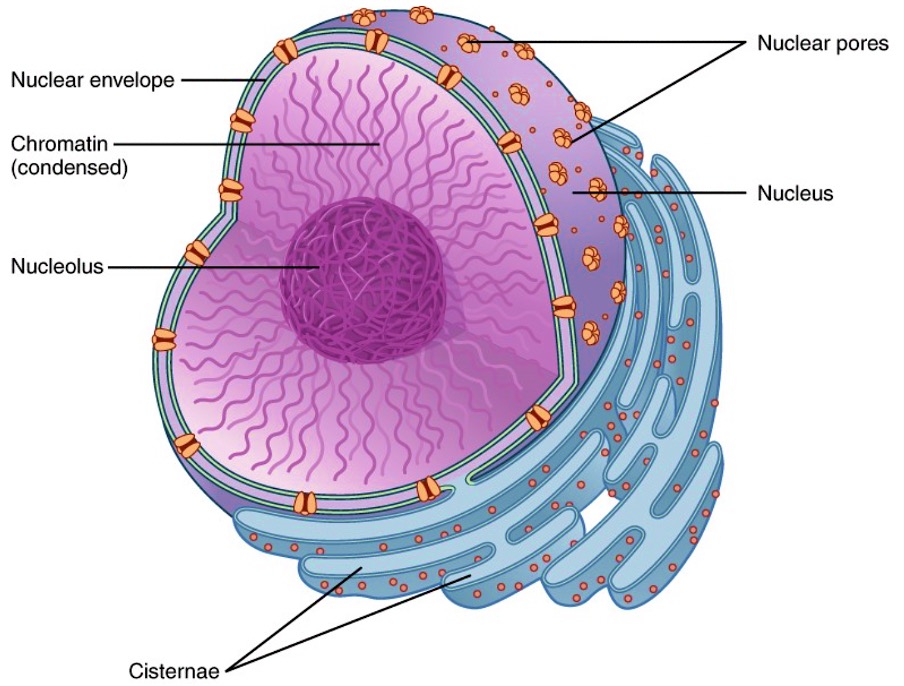
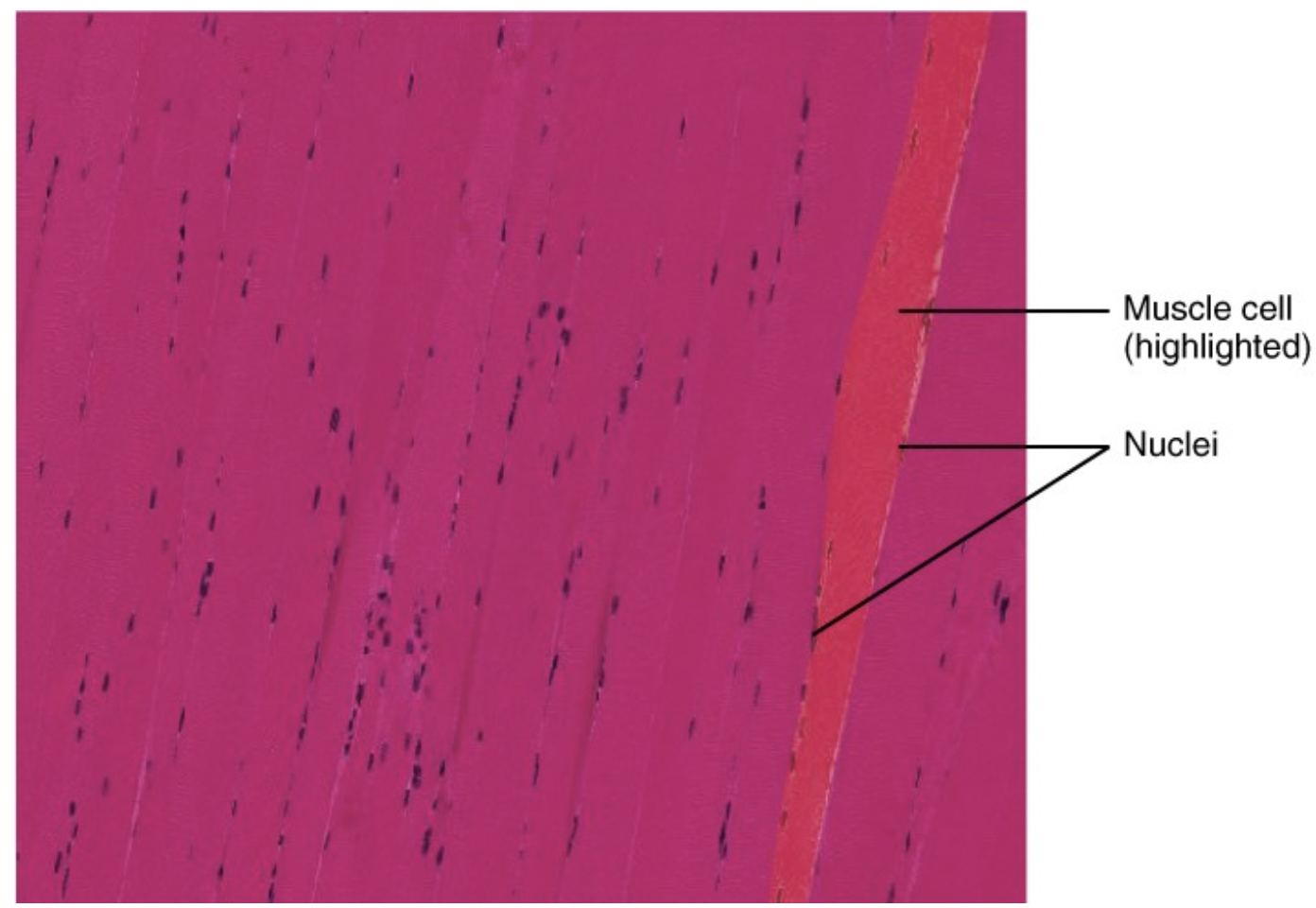
Inside the nucleus lies the blueprint that dictates everything a cell will do and all the products it will make. This information is stored within DNA. The nucleus sends “commands” to the cell via molecular messengers that translate the information from DNA. Each cell in your body (with the exception of germ cells) contains the complete set of your DNA. When a cell divides, the DNA must be duplicated so that each new cell receives a full complement of DNA.
Organisation of the nucleus and its DNA
Like most other cellular organelles, the nucleus is surrounded by a membrane called the nuclear envelope. This membranous covering consists of two adjacent lipid bilayers with a thin fluid space in between them. Spanning these two bilayers are nuclear pores. A nuclear pore is a tiny passageway for the passage of proteins, RNA, and solutes between the nucleus and the cytoplasm. Proteins called pore complexes lining the nuclear pores regulate the passage of materials into and out of the nucleus.
Inside the nuclear envelope is a gel-like nucleoplasm with solutes that include the building blocks of nucleic acids. There also can be a dark-staining mass often visible under a simple light microscope, called a nucleolus (plural = nucleoli). The nucleolus is a region of the nucleus that is responsible for manufacturing the RNA necessary for construction of ribosomes. Once synthesised, newly made ribosomal subunits exit the cell’s nucleus through the nuclear pores.
The genetic instructions that are used to build and maintain an organism are arranged in an orderly manner in strands of DNA. Within the nucleus are threads of chromatin composed of DNA and associated proteins (Figure 3.7). Along the chromatin threads, the DNA is wrapped around a set of histone proteins. A nucleosome is a single, wrapped DNA-histone complex. Multiple nucleosomes along the entire molecule of DNA appear like a beaded necklace, in which the string is the DNA and the beads are the associated histones. When a cell is in the process of division, the chromatin condenses into chromosomes, so that the DNA can be safely transported to the “daughter cells.”
The chromosome is composed of DNA and proteins; it is the condensed form of chromatin.
For example
The number and size of chromosomes varies widely across species.
Humans have approximately 22,000 genes distributed on 46 chromosomes.
Dogs have 78 chromosomes

Cats have 38 chromosomes

Horses have 64 chromosomes
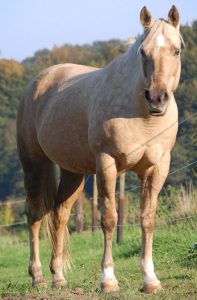
Cattle have 60 chromosomes
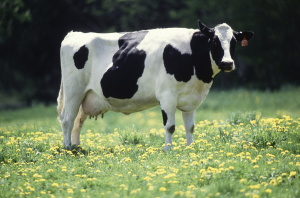
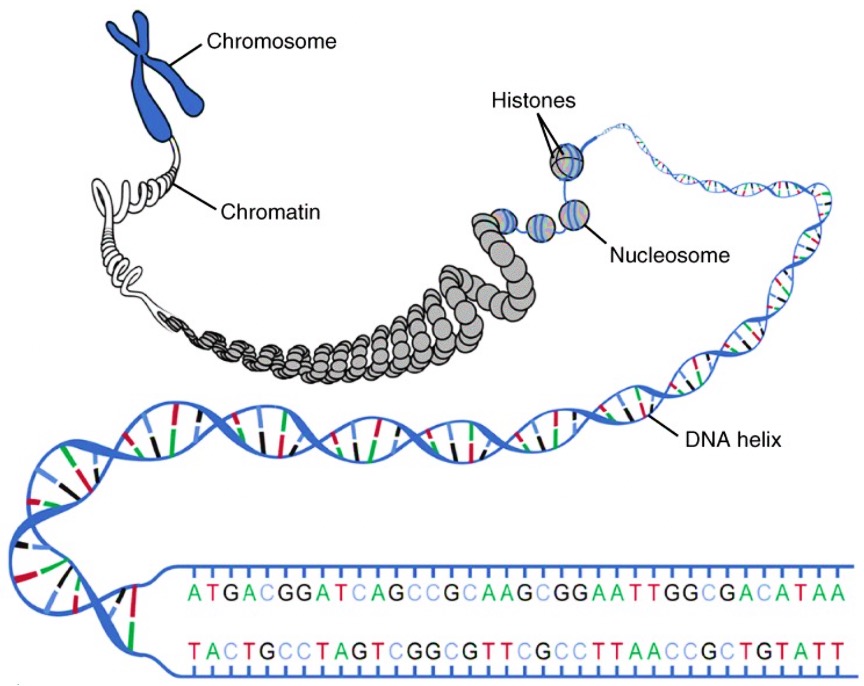
 Case study
Case study
You may have noticed that the number of chromosomes for the species named above are an even number of chromosomes. This is because the vast majority of animals are diploid, which means they have two copies of each chromosome (and two sex chromosomes, either XX or XY).
A 4-year-old Beagle presents with developmental delays and physical abnormalities. The owner reports that the dog has always been smaller than its littermates and exhibits unusual facial features, including a broad nose and widely spaced eyes. The dog also has a history of frequent infections and poor muscle tone.
Upon examination, the veterinarian notes the dog’s distinctive facial features, poor muscle tone, and mild intellectual disability. Blood tests and genetic analysis are conducted to investigate the underlying cause of these symptoms.
Genetic testing reveals the presence of an extra copy of chromosome 38, confirming a diagnosis of trisomy 38. This chromosomal abnormality is rare in dogs and is associated with the observed physical and developmental issues.


